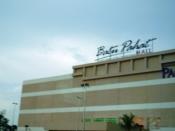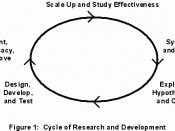To understand the process of under and over applied overheads it is essential that the process for job-costing is understood.
The basic flow of costs in a job-order system begins by recording the costs of material, labor, and manufacturing overhead. "The use of absorption costing to provide quotes for jobs takes account of both fixed and variable costs. (1) Material and direct labor costs are debited to the 'Work in Process' inventory. Any indirect material or indirect labor costs are debited to the Manufacturing Overhead inventory, (which is a temporary control account), along with any other actual manufacturing overhead costs incurred during the period. Manufacturing overhead is applied to Work in Process using a predetermined rate. The offsetting credit entry is to the Manufacturing Overhead control account, any discrepancy between overhead costs incurred and overhead costs applied shows up as a balance in the Manufacturing Overhead control account at the end of the period.
(2)
Since the predetermined overhead rate is based entirely on estimated data, there will almost always be a difference between the actual amount of overhead cost incurred and the amount of overhead cost that is applied to the Work In Process inventory
A debit balance is called underapplied overhead and a credit balance is called overapplied overhead, and can be determined by the ending balance in the Manufacturing Overhead control account.
An underapplied balance occurs when more overhead cost is actually incurred than is applied to the Work in Process inventory. An overapplied balance results from applying more overhead to Work in Process than is actually incurred.
When a predetermined overhead rate is used, it is assumed that the overhead cost is variable. (3) Another approach is to allocate the under- or overapplied balance to Cost of Goods Sold and to the Work in Process and...



Accounting
Very good paper well written.
1 out of 1 people found this comment useful.